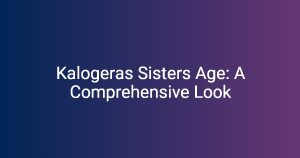In the vast realm of artistic expression, the question “is sketch gay?” invites exploration and deeper understanding. At its core, the term “sketch” refers to short, spontaneous drawings that capture ideas, emotions, and moments, often serving as preliminary frameworks for more elaborate artworks. Conversely, “gay” pertains to a sexual orientation characterized by romantic attraction to members of the same sex. To delve into this inquiry is not merely a matter of assessing the sexual orientation of a medium; instead, it challenges us to examine the cultural narratives and identities woven within the fabric of art itself.
Art, particularly sketching, has historically played a crucial role in LGBTQ+ discourse. Its capacity to convey complex narratives offers a unique lens through which we can analyze societal acceptance, identity, and the myths that often cloud our understanding of both art and sexuality. Therefore, assessing the connection between sketching and LGBTQ+ identities could lead to greater visibility, representation, and ultimately, acceptance.
Understanding Sketch as an Artistic Medium
What is Sketching?
Sketching is an artistic method characterized by its fluidity and spontaneity. Artists utilize various tools—pencils, charcoal, ink, or even digital platforms—to create quick renderings that encapsulate their immediate thoughts and inspirations. The purpose of sketching extends beyond mere visual representation; it serves as a vehicle for experimentation and self-expression and lays the groundwork for more detailed pieces. In a world where artists may feel confined by societal expectations, sketching offers an avenue for personal freedom and authenticity.
Historical Context of Sketching
Throughout history, renowned figures like Leonardo da Vinci and Michelangelo have embraced sketching as a key method of artistic exploration. Their sketches—often brimming with emotion and insight—provided glimpses into their evolving thoughts and ideas. In recent decades, the evolution of artistic freedom has also illuminated LGBTQ+ narratives, as more artists feel empowered to incorporate their identities and experiences into their drawings, challenging historical norms and expanding the conversation about sexual orientation in art.
LGBTQ+ Representation in Art
Importance of Representation
When we consider the phrase “is sketch gay,” we must first understand the significance of representation within the artistic community. Historically, LGBTQ+ artists have often faced exclusion from mainstream art movements. However, the modern landscape reflects a growing trend toward inclusivity, allowing artists from diverse backgrounds to share their voices and challenge stereotypes. Art has become a crucial vessel for societal change—paving the way for acceptance and understanding within communities.
Notable LGBTQ+ Artists
Several prominent LGBTQ+ artists have made significant contributions to the art world, particularly through sketching. For example, David Hockney, a celebrated painter and draftsman, captures the vibrancy of queer life in his works. Similarly, Keith Haring’s playful yet poignant sketches conveyed themes of love, acceptance, and activism during the AIDS crisis. Their artistic legacies underscore the intersection of sexuality and creativity, illuminating how personal identity can profoundly influence artistic themes.
The Terminology Behind “Is Sketch Gay?”
The Question Explained
When asking “is sketch gay?,” it is essential to unpack the implications of questioning sexual orientation within art. Art is inherently subjective, and interpreting it through a sexual lens can yield varied understandings. By contextualizing the question, we can explore how identity and sexuality influence each artist’s work—both consciously and unconsciously.
The Role of Nuance in Interpretation
Moreover, the interpretation of art is laden with nuance. Distinctions between artistic expression and personal identity can often blur. A viewer’s perceptions may be influenced by societal norms, stereotypes, or personal biases. Therefore, the conversations surrounding “is sketch gay?” serve to illuminate not just the identities of artists but also the perspectives of audiences who engage with their work.
Examining Common Misconceptions
Myths About Sexual Orientation and Art
A critical examination reveals prevalent myths about art and sexuality, particularly the misleading notion that art itself can possess a sexual orientation. While individual artists may express their identities through their work, it is essential to recognize that art transcends simplistic labels. The stereotypes that often shape perceptions of LGBTQ+ artists can misrepresent the complexity and breadth of their talents.
The Spectrum of Sexual Orientation
Understanding that sexual orientation exists along a fluid spectrum is vital in discussions surrounding artistic expression and identity. Just as individuals identify in various ways, artists too may choose to convey their experiences and emotions without being confined to a single narrative. The intertwining of art and identity reflects the spectrum of human experience, encouraging a broader appreciation of diverse narratives.
Sketch as a Reflection of Identity
Exploring Personal Narratives through Sketching
Artists often use sketching as a medium to explore their personal narratives. Through sketches, they can convey intimate stories regarding their sexual orientation and the experiences that shape their identities. Such sketches often reflect complex emotions, struggles, and triumphs, offering valuable insights into the artist’s world.
Examples of Sketches with LGBTQ+ Themes
Several sketches distinctly embody LGBTQ+ themes and narratives. For example, works depicting the experiences of queer youth or representations of same-sex relationships celebrate individuality and community. By analyzing various styles, techniques, and overall messages within these pieces, we are reminded that art serves as a reflection of identity and a testament to human connection.
Conclusion
The question “is sketch gay?” extends far beyond mere labels or categorization. It represents a broader dialogue about identity, representation, and artistic expression. Throughout the exploration of this topic, we have uncovered the intricate interplay between sketching and personal narratives. Emphasizing the importance of LGBTQ+ representation in art reaffirms art as a powerful form of expression that transcends boundaries and invites thoughtful discussions.
Further Reading and Resources
For those eager to learn more about LGBTQ+ representation in art, several resources can enhance your understanding:
– “Queer Art: A Graphic History” – A comprehensive book detailing LGBTQ+ contributions to various art forms.
– The Museum of Contemporary Art’s [LGBTQ+ Art](https://www.moca.org/queer-voices) section, showcasing notable works and artists.
Call to Action
I encourage readers to delve into the world of LGBTQ+ art, exploring the extraordinary contributions of diverse creators. Support local LGBTQ+ art initiatives and communities to foster resilience, visibility, and love within the artistic landscape.
| LGBTQ+ Artists | Contributions | Themes Explored |
|---|---|---|
| David Hockney | Iconic paintings and sketches | Queer life and relationships |
| Keith Haring | Activism-oriented murals and sketches | AIDS awareness and acceptance |
| Jean-Michel Basquiat | Innovative graffiti art and sketches | Race, identity, and social issues |
FAQs
1. What does the term “sketch” mean in art?
Sketch refers to quick, informal drawings that serve as a foundation for larger artworks.
2. How does LGBTQ+ representation manifest in sketching?
LGBTQ+ artists often use sketches to explore and express their identities, challenging societal norms.
3. Can art itself be considered “gay”?
Art does not possess a sexual orientation; it reflects the identities and experiences of the artist.
4. Who are some notable LGBTQ+ sketch artists?
Artists like David Hockney and Keith Haring have made significant contributions to the art world, often exploring LGBTQ+ themes.
5. How can art contribute to societal change?
Art serves as a medium for raising awareness, fostering acceptance, and inspiring dialogue surrounding various issues, including LGBTQ+ rights.
6. Is sexual orientation fluid for artists?
Yes, many artists express their sexual orientation along a spectrum, allowing for diverse representations in their work.
7. What tools are commonly used for sketching?
Common tools include pencils, charcoal, ink, and digital tools suitable for various styles.
8. Why is representation in art important?
Representation in art ensures diverse voices are heard and validated, fostering a more inclusive society.
9. How can I support LGBTQ+ artists?
You can support LGBTQ+ artists by purchasing their works, attending exhibitions, or engaging with their content online.
10. Where can I find more LGBTQ+ art resources?
Look for local galleries, online platforms, and LGBTQ+ art organizations that promote visibility and engagement.




